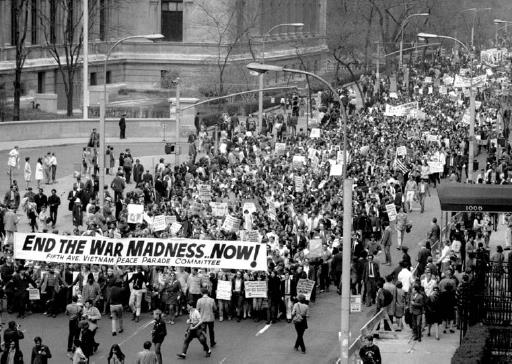Political and Social MovementsBeat Movement |
Who were the hippies? |
Most hippies of the 1960s and 1970s were young (15 to 25 years old), white, and from middle-class families. The counterculture (antiestablishment) movement advocated peace, love, and beauty. Having dropped out (of modern society) and tuned in (to their own feelings), these flower children were as well known for their political and social beliefs as they were for their controversial lifestyle: They opposed American involvement in the Vietnam War (1954–75) and rejected an industrialized society that seemed to care only about money; they favored personal simplicity, sometimes living in small communes where possessions and work were shared, or living an itinerant lifestyle, in which day-to-day responsibilities were few if any; they wore tattered jeans and bright clothing usually of natural fabrics, grew their hair, braided beads into their locks, walked around barefoot or in sandals, and listened to a new generation of artists including the Beatles, the Grateful Dead, Jefferson Airplane, Bob Dylan, and Joan Baez. Some hippies were also known for their drug use: Experimenting with marijuana and LSD, some hoped to gain profound insights or even achieve salvation through the drug experience—something hippie guru Timothy Leary told them was possible. New York City’s East Village and San Francisco’s Haight-Ashbury neighborhood became havens of the counterculture. The movement began on American soil, but was soon embraced elsewhere as well—principally Canada and Great Britain.
What happened to the hippies? The conflict in Vietnam ended, flower children grew older, drugs took their toll on some, and by 1980 there was no such thing as free love. Still, a few continued to lead an alternative lifestyle, while at the opposite end of the spectrum others bought back into the establishment. Still others adapted their flower-child beliefs to the ever-changing world around them and got on with their lives, working at jobs and raising children in the most socially and politically conscious way possible.

